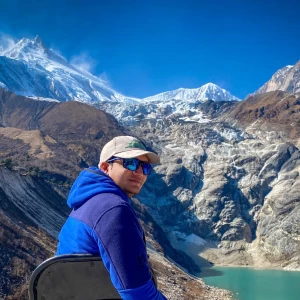The journey to Everest Base Camp is more than just a trek, it's a test of how well you adapt to high altitudes. With the right training, precautions, and support, even the toughest parts of the trail become achievable.
Walking To Everest Base Camp – Everything You Need to Know
Table of Contents
Walking to Everest Base Camp is one of the most challenging hikes in the world. Yet, it remains a proud achievement for many. It takes you to an altitude of 5,364 metres. The hike to Base Camp of Mount Everest offers a close view of the Nepali Himalayas. The journey fits into a 12-day schedule. This includes 11 days of walking and one day to exit the trail.
A minimum 15-day vacation is suggested for the Everest Base Camp Trek. This allows time for travel, rest, and adjustments. It also helps in making the base camp dream a reality.
In this article, we will explain everything about the hike to Everest Base Camp. At the end, you will also find a departure date to join the hike.
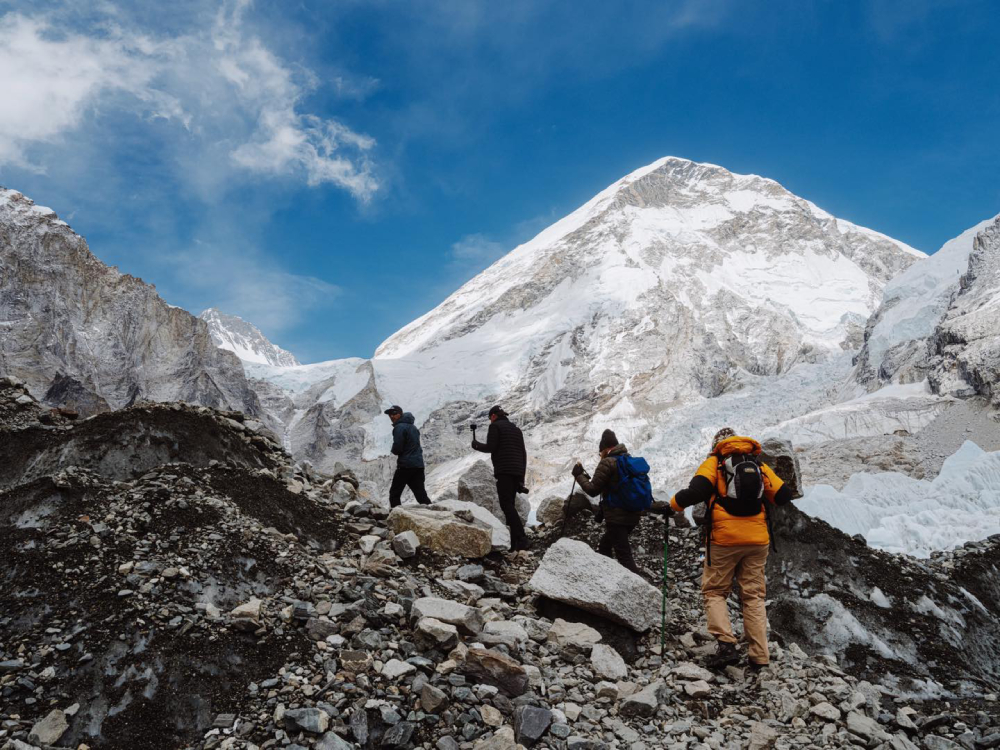
Best Time for Walking to Everest Base Camp
Every other person will tell you that Spring or Autumn is the best time. But the right time to hike to Base Camp of Mount Everest is not just the season. It is about the exact dates. In Spring, the ideal time is from March 15 to the end of May.
During this period, rhododendron forests bloom in red, pink, and white. Wild honeybees feed on these flowers. They produce wild honey from the forest nectar.
Winter ends by mid-March. So, the weather after that stays clear beyond Lukla. You will likely meet locals along the trail. Most are Sherpas, known for their mountain life and culture.
One special thing about Spring is meeting climbers. Many will be heading for the Mount Everest summit. You can talk to them. You are hiking to the same base as they are. At Base Camp, you will see climbers, Sherpas, and guides preparing for summit pushes.
There is also a temporary coffee shop set up at Base Camp in Spring. It is the world’s highest coffee shop. This is open only during climbing season.
Spring is also the only time when trekkers can sleep at Base Camp without special permits. This is not possible in other seasons.
Autumn is another good time. The season runs from early October to early December. This period is good for all kinds of trips in Nepal. That includes helicopter tours or walking to Everest Base Camp.
The weather is clear and stable. Festivals are held across the country. Villages become vibrant with gatherings and local harvest. You can join the Sherpas during harvest time. They often offer butter tea during this season.
Although the days are shorter in Autumn, the skies are mostly clear. This makes it a great time to view the world’s highest peak.
With the current climate changes, clear weather often lasts until late December. It may be a bit colder. But the trekking experience remains just as good.
Also, check Tours and Trekking in Nepal
How Difficult is walking to Everest Base Camp
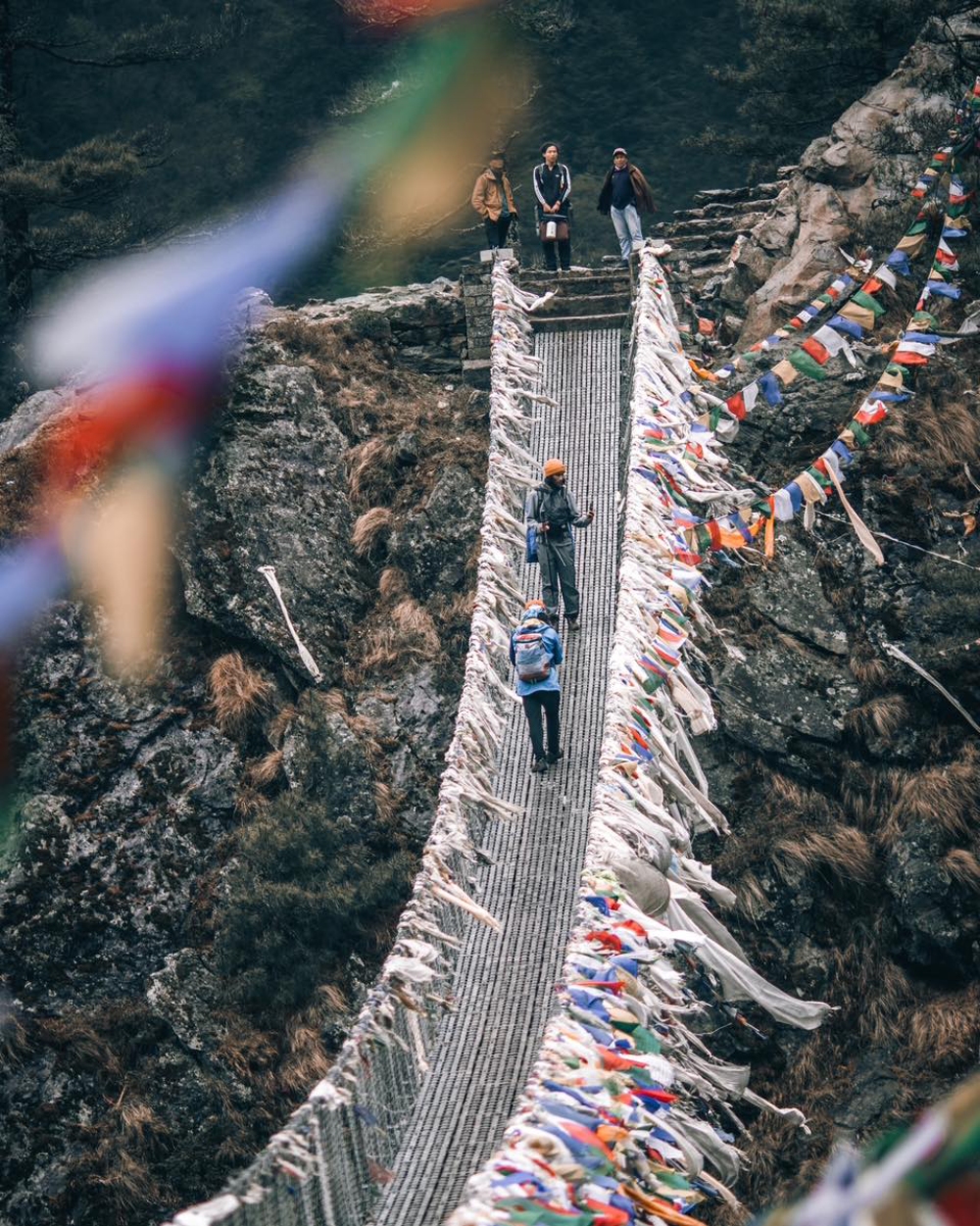
There is no doubt, and we will not lie. Walking to Everest Base Camp is a challenging trek.
First, you reach an altitude of 5,364 metres (17,598 feet). Altitude is the main difficulty. Along with that, the trail has many steep uphills and downhills. This starts early, through forests in Chheplung, Namche, and Phungi Thanga.
After you reach Debuche or Tengboche, the tree line ends. The terrain becomes more open. There are fewer climbs, but oxygen levels drop. If you push too much, your body will feel weak and tired.
In this region, your guides, porters, and lodges are carefully arranged. This helps you manage the challenges and complete the hike successfully.
Eating well, sleeping enough, and drinking plenty of fluids reduce the chance of altitude sickness.
The trails are rugged. On the day you hike to Base Camp, you walk over glacial moraines. Be careful not to slip.
In conclusion, it is difficult to hike to Base Camp of Mount Everest. Be prepared with proper fitness and endurance training.
Suggested Itinerary for Walking to Everest Base Camp
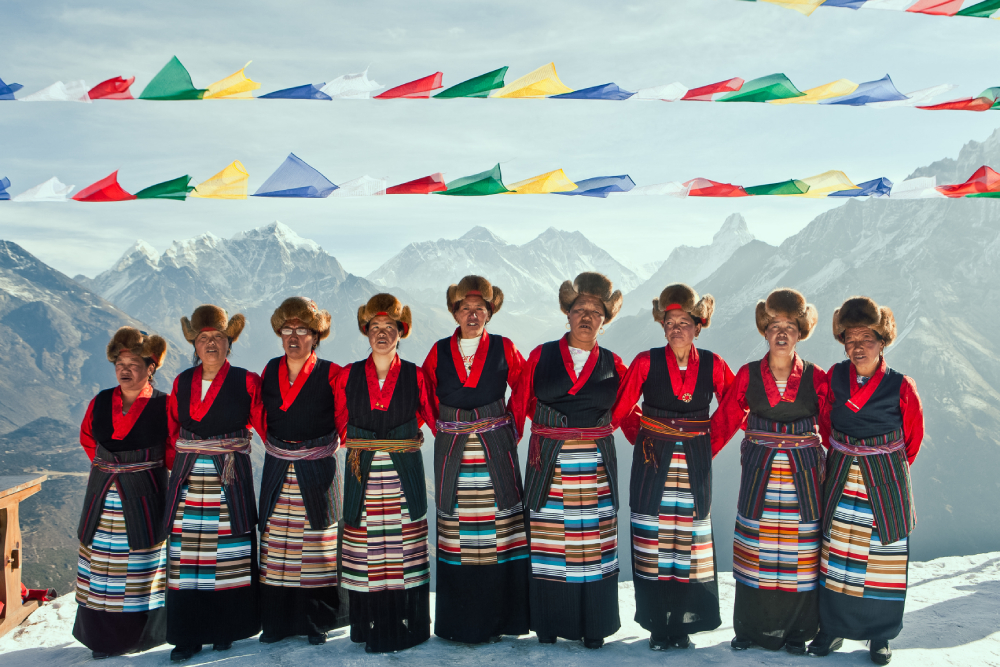
The trek to Base Camp of Mount Everest is challenging. But with the right itinerary, you can reach safely. Below is the best suggested walking plan to Everest Base Camp. This route balances acclimatisation and pace. It helps avoid altitude issues and ensures a successful and affordable trip.
Day 1: Fly to Lukla and Trek to Phakding
The first day of walking to Everest Base Camp begins with a flight to Lukla. This flight can be from Kathmandu or Manthali. During peak trekking seasons, flights mostly operate from Manthali. For this, travellers must drive for about 5 hours starting at 1 AM to catch the early morning flight. After landing in Lukla, the walk begins. The trail descends about 200 metres to Phakding. This part of the trek to Base Camp Mt Everest is easier compared to the upcoming days. The total walk time is around 4 hours.
Day 2: Trek to Namche Bazaar
This is the first long day of walking to Everest Base Camp. The trail leads through the Dudh Koshi River Valley and gradually climbs to Namche Bazaar. You will walk for about 6 to 7 hours today. The final section is a steep uphill climb that tests your endurance. Namche Bazaar is the main town of the Khumbu region. It is a good place to buy any last-minute items. Above this point, there are no major stores or shops. Spending extra time here also lets you adjust to the altitude better.
Day 3: Acclimate in Namche
This is your first acclimatisation day on the Everest Base Camp trek. It is important to give your body time to adapt to the increasing altitude. A short hike to Hotel Everest View is recommended. You can also continue 30 minutes further to Khumjung Village. This is one of the oldest Sherpa villages in the region. You can visit the Khumjung Monastery, where the famous Yeti Scalp is kept. You will also see the legacy of Sir Edmund Hillary, who helped build schools and hospitals here. Acclimatisation days like this reduce the risk of altitude sickness.
Day 4: Trek to Debuche
After a good rest, the trek to Base Camp Mt Everest continues toward Debuche. This day involves walking for about 6 hours. The trail crosses scenic villages such as Kyangjuma and Phungi Thanga. You will also pass the famous Tengboche Monastery, one of the largest in the Everest region. After visiting the monastery, the trail descends through rhododendron forests to Debuche. Until this point, the lodges are fairly well-equipped with basic amenities. Beyond Debuche, most lodges only provide beds and blankets with very limited services.
Day 5: Trek to Dingboche
Today’s trek to Everest Base Camp continues with a steady walk to Dingboche. This day does not include steep uphills, but the gain in altitude makes it tiring. The walk takes 5 to 6 hours. Dingboche is located at 4,400 metres on the banks of the Dudh Koshi River. It is also a popular stop for those climbing Island Peak. As the elevation increases, oxygen levels drop. This causes trekkers to walk slower. Staying here helps your body prepare for the higher altitudes to come.
Day 6: Acclimatise in Dingboche
This is the second acclimatisation day on your walking to Everest Base Camp journey. Since you have now crossed 4,000 metres, it is important to help your body adjust. A short and steep hike to Nangkartshang Hill is suggested. The hill sits at 5,100 metres and the round trip takes about 2.5 hours. The hike follows the rule of "climb high, sleep low," which is key for acclimatisation. This day prepares you physically and mentally for the trek to Base Camp Mt Everest in the coming days.
Day 7: Trek to Lobuche
The trek to Lobuche brings you deeper into the Everest region. You walk through a hidden valley with less vegetation and lower oxygen levels. The trail is gradual but climbs around 500 metres in elevation. Trekkers often feel short of breath in this area, so it is important to rest well and drink enough fluids. Lobuche is one of the last stops before reaching Everest Base Camp. Spend the evening relaxing and preparing for the big day tomorrow.
Day 8: Trek to Everest Base Camp and Return to Gorakshep
This is the most important day of the entire walking to Everest Base Camp journey. Start early and walk for about 2.5 hours to reach Gorakshep, the last settlement on the trail. Gorakshep sits at 5,160 metres on the edge of a glacial moraine. After a short break, continue your trek to Everest Base Camp. The final leg takes 2 to 3 hours, depending on your pace. When you arrive at 5,364 metres, you will see the true glory of Base Camp Mt Everest. After celebrating this achievement, walk back to Gorakshep for the night. If you are feeling very tired, a helicopter flight out can be arranged.
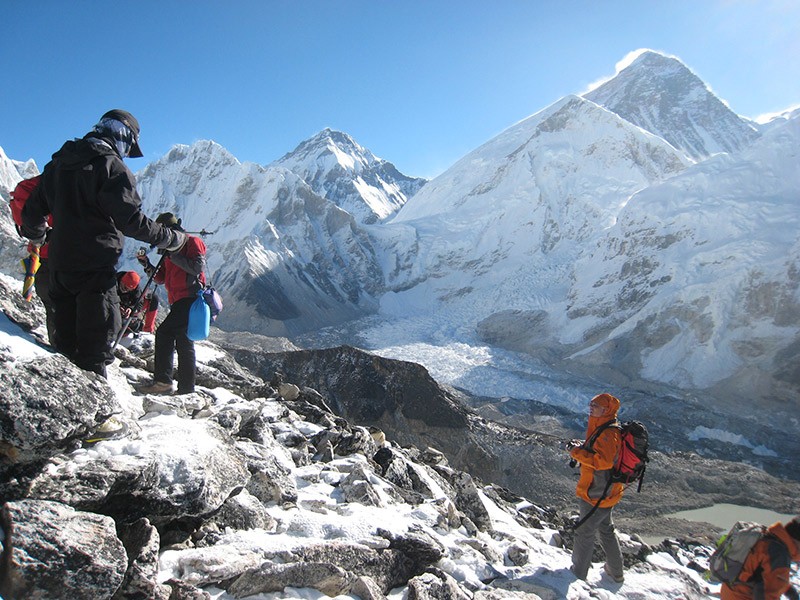
Day 9: Trek to Pheriche
An optional early morning hike to Kalapatthar gives you a classic sunrise view of Mount Everest. If you skip that, enjoy a relaxed breakfast and begin the descent. The trail goes down to Pheriche, located on the opposite side of Dingboche. This part of the trek is easier as you lose elevation. However, the trail is still rugged, and it is important to walk carefully.
Day 10: Trek to Namche
Continue your descent along the same trail used earlier. The return to Namche takes about 6 to 7 hours. You will feel more energetic due to the lower altitude. In Namche, reward yourself with a warm meal or visit the famous Irish Pub. This is a good place to relax after several hard days of walking to Everest Base Camp.
Day 11: Trek to Lukla
Today marks the final walking day of your Everest Base Camp trek. The walk to Lukla takes about 6 hours, following the Dudh Koshi River downhill. Enjoy your last night in the mountains. Reflect on your journey and get ready for your flight the next day.
Day 12: Fly Back from Lukla
Depending on the season, your flight will either return to Kathmandu or Manthali. If your flight lands in Manthali, expect another 4 to 5 hour drive to Kathmandu. This day concludes your trek to Base Camp Mt Everest. It’s recommended to spend at least 3 extra days in Kathmandu in case flights to or from Lukla are delayed due to weather.
Also check, Cheapest Everest Base Camp Trek.
Price of Walking to Everest Base Camp
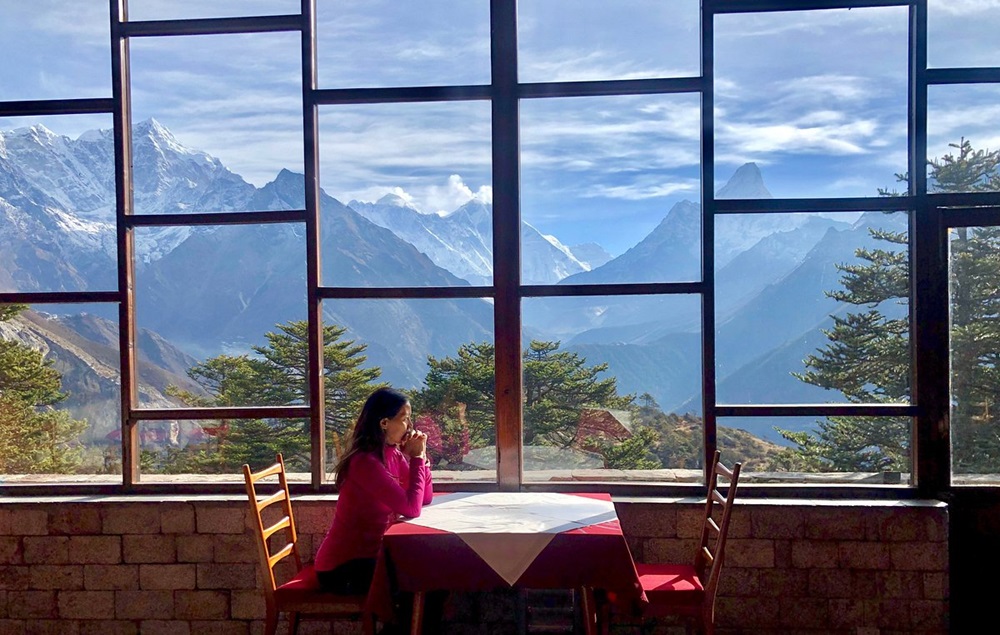
The price of walking to Everest Base Camp depends on the type of package you choose. Group departures with basic services start from USD 699 per person. These are fixed departures with standard arrangements. For travellers who prefer a more comfortable and complete experience, the all-inclusive 15-day Everest Base Camp trek costs from USD 1399 per person. This option includes everything from start to finish.
The price breakdown basically includes the following:
- A Trekking guide
- Land Transfers
- Domestic Flights
- Porters
- Meals (Breakfast-Lunch-Dinner)
- Trekking Permits and entry fees of Sagarmatha National Park
Always check what the prices include to ensure you pay for good for us.
How to Avoid Altitude Sickness during the Everest Base Camp Walk
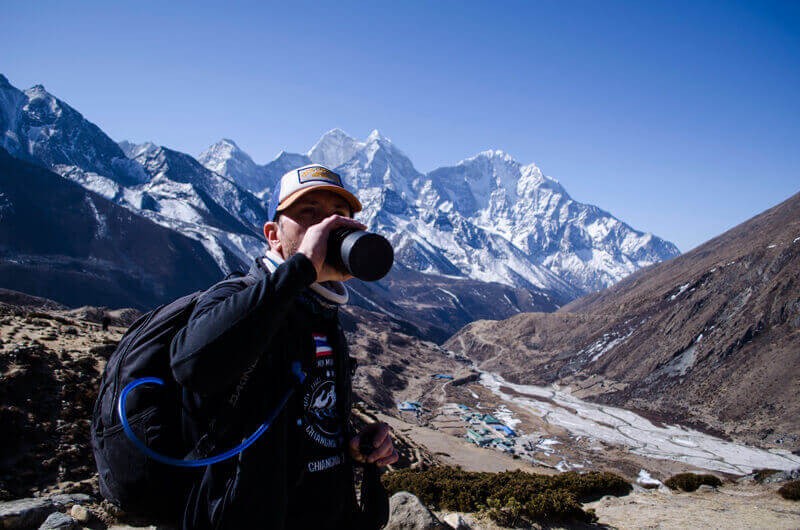
Altitude sickness is the most common challenge during your walk to Everest Base Camp. As the journey takes you above 5,000 meters, altitude and terrain together test your body. But the good news is, with a few simple preparations, altitude sickness can be avoided.
The first step is to prepare well before your trek. You should begin physical training at least 1 to 2 months before trekking to Everest Base Camp. Build stamina through daily walking, light hiking, and regular cardio exercises. Keep your diet clean and hydrate well in the weeks leading up to your trip.
Once on the trail, always follow the golden rule: eat enough, drink enough, and sleep well. Fueling your body like you would in normal conditions helps it function properly at high elevations. Even when you don’t feel hungry, eat small meals. Dehydration is a silent enemy at altitude, so drink at least 2 litres of water daily.
Using acetazolamide (Diamox) can also support your body’s acclimatisation. For best results, start taking 250 mg daily at least 48 hours before beginning your ascent. This means you should begin in Kathmandu. Remember, this medicine doesn’t cure altitude sickness—it only helps your body adapt faster. Always consult your doctor before starting any medication.
Recognising early signs of altitude sickness is key. Do not rely only on oximeter readings. Low oxygen levels alone do not mean you are sick. Instead, look for symptoms like:
- Pounding headache
- Loss of appetite
- Nausea or vomiting
- Shortness of breath at rest
- Difficulty sleeping
If you feel any of these, stop and inform your guide immediately. All our guides are trained in high-altitude first aid. They will know how to respond and take the right actions. If the symptoms worsen, the best solution is to descend quickly to a lower altitude.
Lastly, be mentally strong and focused. Altitude sickness can also be influenced by your mindset. Staying positive, staying patient, and listening to your body is what helps you complete the walk to Everest Base Camp safely.
Conclusion
Walking to Everest Base Camp makes is challenging for sure but doable with proper preparation and right team. Do not hesitate to ask us if you have any queries for the hike to Base Camp of Mount Everest.

